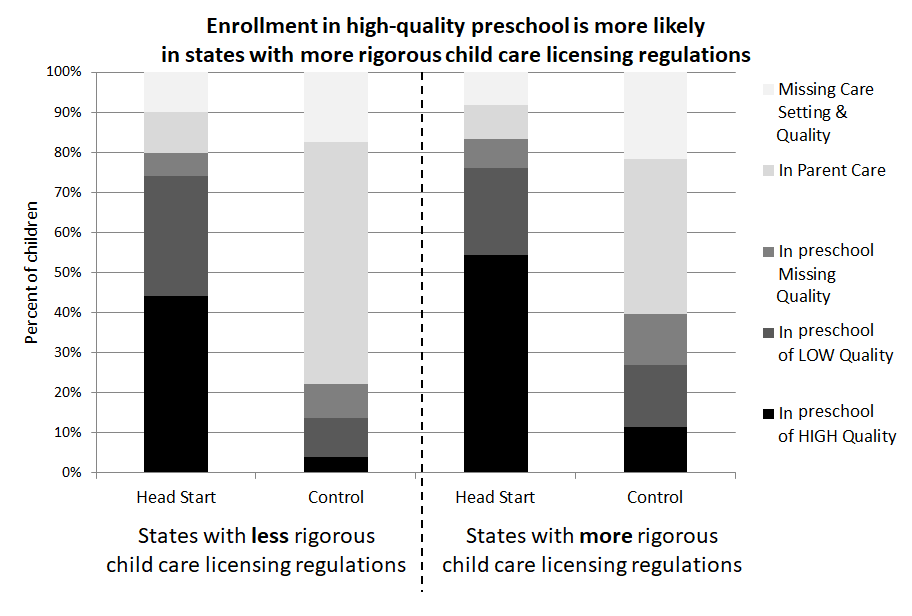Varying States of Head Start: Impacts of a Federal Program Across State Policy Contexts
Maia C. Connors & Allison H. Friedman-Krauss
Head Start increases low-income children’s access to high-quality preschool.
Attending high-quality preschool is associated with stronger cognitive and social-emotional skills, especially for low-income children. We know from previous experimental research that Head Start, a federally funded and regulated program, is an important source of high-quality preschool for low-income families nationwide. But Head Start programs do not have the capacity to serve all eligible families that want to attend. Most low-income children are cared for at home or attend other preschool programs that are regulated by individual states rather than the federal government. Child care licensing regulations are the primary way that states set quality standards for most preschool programs. Beyond basic health and safety regulations, the rigor of quality standards set by states’ licensing policies varies widely.
Do Head Start’s impacts on enrollment in high-quality preschool vary from state to state?

Yes. Head Start’s impacts on enrollment in high-quality preschool were largest in states with less rigorous child care licensing regulations. Whether or not they were offered the opportunity to enroll in Head Start, low-income children were more likely to enroll in high quality preschool in states with more rigorous licensing regulations, compared to children in states with weaker regulations. Quality standards regarding the program and staff may be particularly important for supporting classroom quality.
How did we do this study?
These findings come from a noncausal statistical re-analysis of data from the Head Start Impact Study (HSIS), a nationally-representative experimental study conducted in 2002–2003. Children who applied to one of the Head Start programs participating in the study were randomly assigned to either receive the offer to enroll in Head Start or to be in the “control” group (not eligible to enroll in that Head Start center).
The current study sample includes 4,385 3- and 4-year-old children who ultimately enrolled in 434 Head Start programs, 355 non-Head Start center-based ECE programs, and 91 family child care homes across 22 states. We matched these HSIS data with publicly available data regarding state child care licensing regulations in 2002. We then used a statistical method called multinomial logistic regression to compare children’s likelihood to enroll in high-quality preschool in the Head Start group relative to the control group across state policy contexts.
It is important to note that this is a study only of states’ written policies, which may differ from actual policy implementation or enforcement. In addition, these findings can only be generalized to children who qualified for, and applied to, Head Start in 2002-2003. The preschool options available to low-income families, and the enrollment choices they make, are likely different today.
Full Article Citation:
Connors, M.C. & Friedman-Krauss, A.H. (2017). Varying States of Head Start: Impacts of a Federal Program Across State Policy Contexts. Journal of Research on Educational Effectiveness, 10(4), 675-703, DOI: 10.1080/19345747.2017.1320736.
